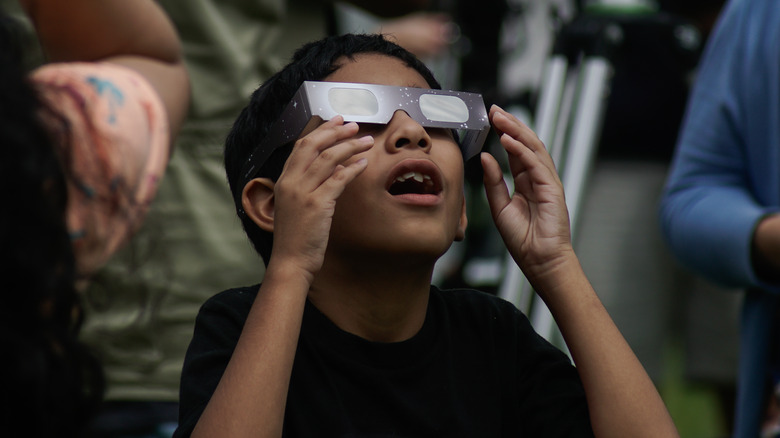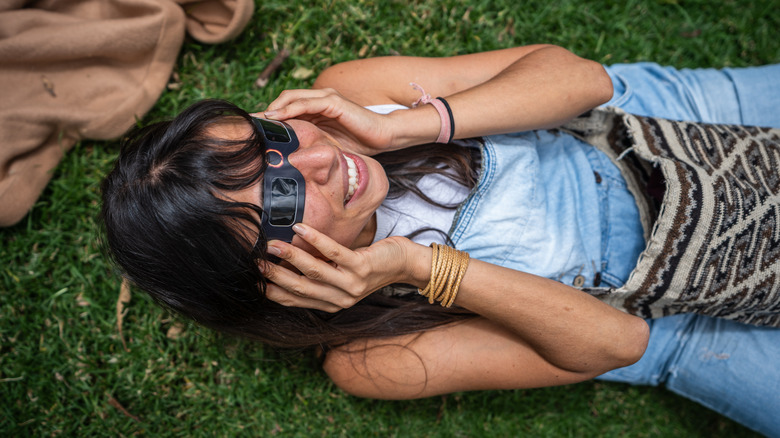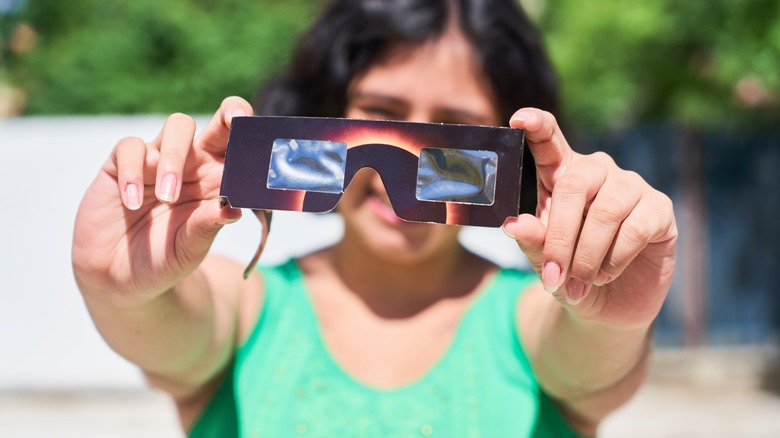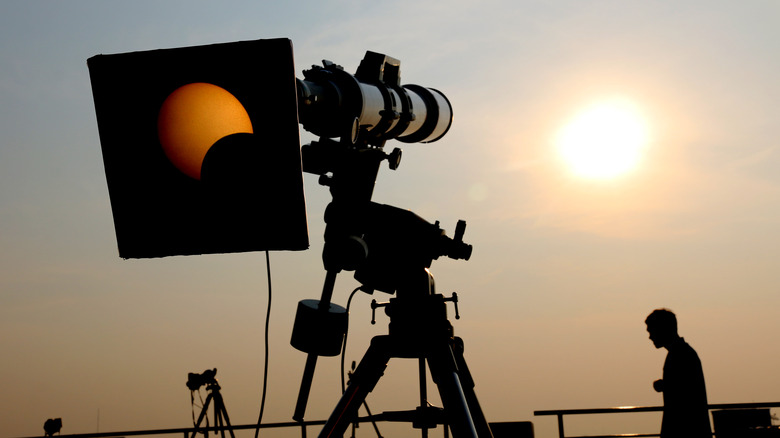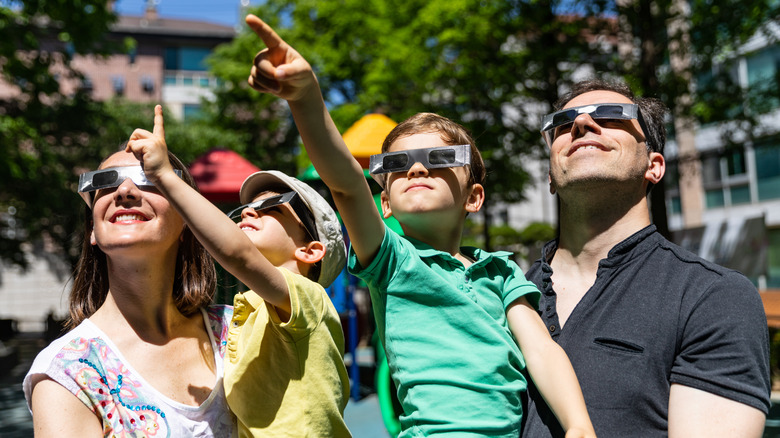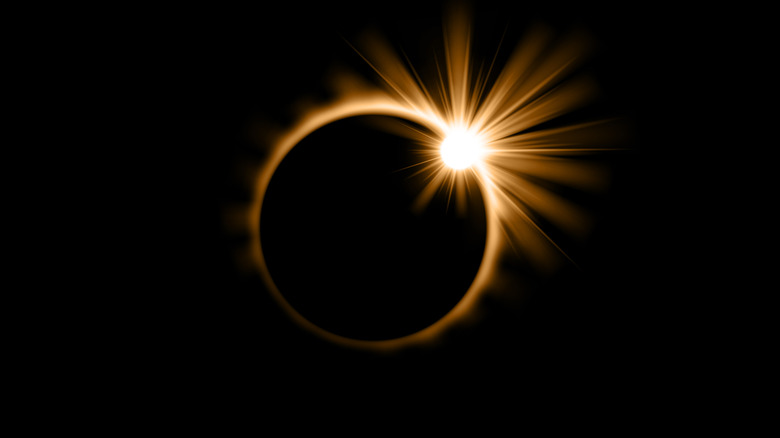5 Things You Need To Check Before The 2024 Solar Eclipse
On April 8, 2024, an estimated four million Americans are likely to participate in what is being described as the largest mass travel event the U.S. has ever witnessed. This massive crowd of people — the equivalent of 50 simultaneous Super Bowls across the nation — will be out in the open on that day to witness the last total solar eclipse visible in the continental United States for the next 20 years.
The Solar Eclipse will be visible across a 115-mile wide patch that stretches from Texas to Maine while passing through parts of Oklahoma, Arkansas, Missouri, Illinois, Kentucky, Indiana, Ohio, Pennsylvania, New York, Vermont, and New Hampshire on the way.
If you live in any of these states, consider yourself lucky, given that you may not need to travel as people from the rest of the states. Nevertheless, several counties on the path of totality are bracing for a massive influx of tourists from across the country, with some even declaring a state of emergency.
In case you are among the millions of people intending to witness this rare celestial event, there are several things you need to do to ensure that your experience goes as smoothly as possible. These things range from making the correct travel plans to carrying the right equipment so your eyes (and equipment) do not end up damaged.
Pick your viewing locations carefully
Imagine waiting to witness a rare celestial phenomenon, only for the view to be blocked by clouds. This has happened so many times in the past that it is imperative that the location you choose for viewing the 2024 total solar eclipse is absolutely cloud-free on the day.
While it is impossible to predict the weather with 100% certainty, it would be a great idea to refer to popular weather forecasting platforms to get a clearer idea of what to expect on eclipse day. Among the notable platforms that we could think of include Windy, Pivotal Weather, and U.S. National Weather Service GOES Image Viewer.
That being said, experts have already indicated that the southern parts of the U.S. have a greater chance of being cloud-free during the eclipse. An interactive map created by The National Centers for Environmental Information (NCEI) already shows the best possible locations to view the eclipse with the least possibility of clouds obscuring the view.
As per the map, Texas, Oklahoma, and Southeast Missouri are the best locations for a cloud-free eclipse-viewing experience. However, you may still need to rely on local weather conditions on the day of the eclipse to ensure trouble-free viewing.
Once you have homed in on a location of choice, you will need to ensure that you make hotel reservations in advance. With less than a week left for the eclipse, room availability in areas of totality may already be low.
Make sure you have the right eye protection equipment
There is still confusion about what the "correct" eye protection equipment is required to view solar eclipses safely. NASA—while stopping short of recommending individual brands—does indicate that you'd need an ISO 12312-2 certified pair of solar glasses to view an eclipse safely. We did our research and already have an article that lists five solar glasses that you can buy to view the 2024 total solar eclipse safely.
In case you are unable to source one of these glasses, it is also possible to use shade number 14 welder's glass for the purpose. These glasses can be sourced from your nearest welder supply shops. Do note that viewing a solar eclipse using sunglasses, smoked glasses, film negatives, and polarizing filters is a bad idea. If you are in doubt about the quality of the equipment being used, don't look directly at the sun, as there is a big risk.
That said, the one thing that most people get wrong about total solar eclipses is that it is quite safe to look directly at the completely obscured sun during the few seconds/minutes of totality (when the moon completely covers the sun). However, you will need to use recommended eye protection during the rest of the phases that come immediately before and after totality.
Ensure adequate protection for cameras and photography equipment
Given the sheer importance of the event, many of us will be keen to capture the solar eclipse and the events surrounding it using digital cameras and smartphones. While experienced photographers may already be aware of all the precautions needed to be taken before setting out and capturing solar eclipses, that may not necessarily be the case as far as the less experienced photographers are concerned.
Major camera equipment makers — including Canon and Nikon — mandate the use of solar filters that should be placed over the front of the lens while capturing images of an eclipse. Using a digital camera without such filters may damage not only the camera sensor but also cause the aperture blades inside the lens to melt. Amateur photographers should also ensure that they never use the live viewfinder to look at the sun, although it is safe to look at an image of the eclipsing sun through the camera display.
It is also important to note that during totality, it is important to remove these filters to get the best pictures. This would also mean you may end up spending a lot of time playing around with the camera equipment, trying to get the best shot instead of enjoying the moment. We have also addressed questions about the possibility of smartphones being damaged by the sun during an eclipse.
Don't forget your creature comforts
Now that you have chosen the right location, the best hotels, and ensured you have the best gadgets with you to capture the solar eclipse and also know how to keep them safe, it is now time to turn your attention to some other things that will make life easier during this trip.
Given that the eclipse is set to take place in the afternoon, you'd be spending a lot of time outside in the hot sun. In these circumstances, it would be a great idea to ensure that you are well stocked up with adequate hydration and food, considering the long hours you may be required to spend outside on eclipse day.
Carrying things like a cooler box with ice, a hat, and a sunscreen location would be a good idea, too. If you have the space for them and are traveling with family, take an adequate number of portable chairs and a table with you. If you end up finding a good place to view the eclipse, you will almost certainly need adequate seating space.
Enjoy the experience!
Given that there was only a six-year gap between the last total solar eclipse (2017) and the current 2024 event, most people may think that the phenomenon isn't as rare as people are making it to be. On the contrary, the relatively short gap between 2017 and 2024 is an exception and not the norm.
This can be easily deduced by the fact that the last total solar eclipse that people in the continental United States witnessed before 2017 happened way back in 1979, leaving a gap of nearly 38 years between the two events. Similarly, the next solar eclipse visible to people living in the continental United States won't happen until August 23, 2044, which is a good 20 years away.
Those of us who have the resources to travel to other parts of the globe for future solar eclipses in other parts of the globe may have the opportunity to watch this truly spectacular event without having to wait that long. That, however, cannot be said for the majority of us. It is important, therefore, to ensure that everyone treats this event as a once-in-a-lifetime opportunity and ends the day with memories of a lifetime.
